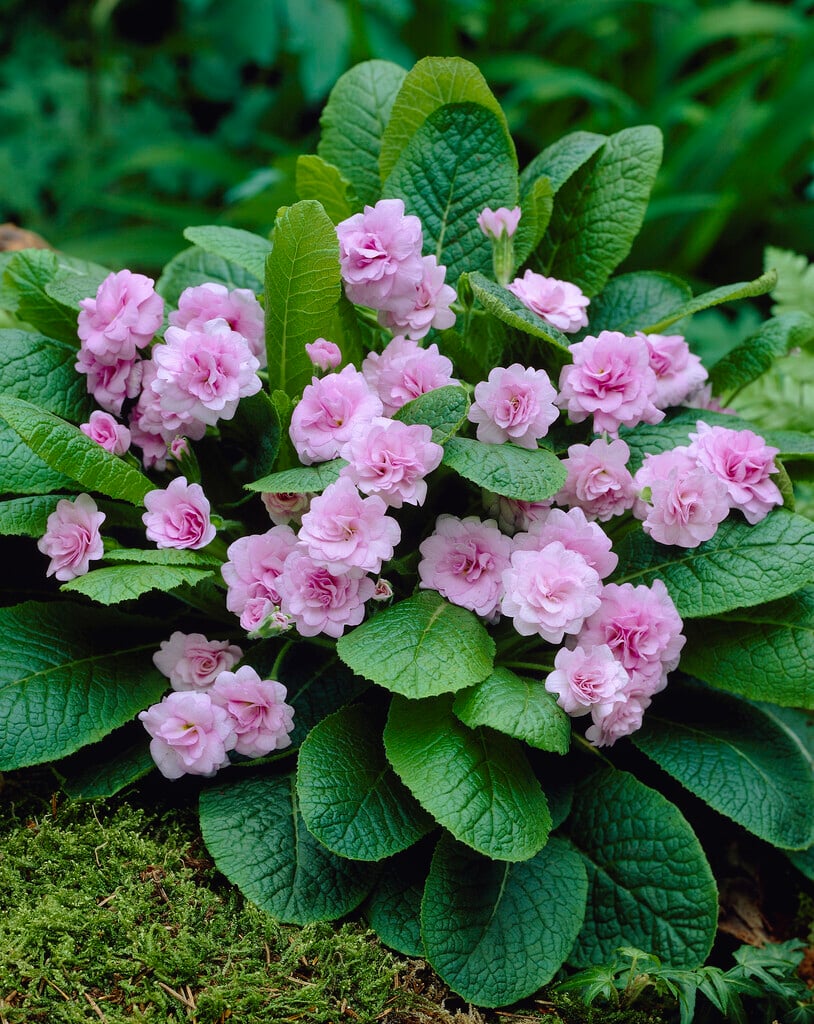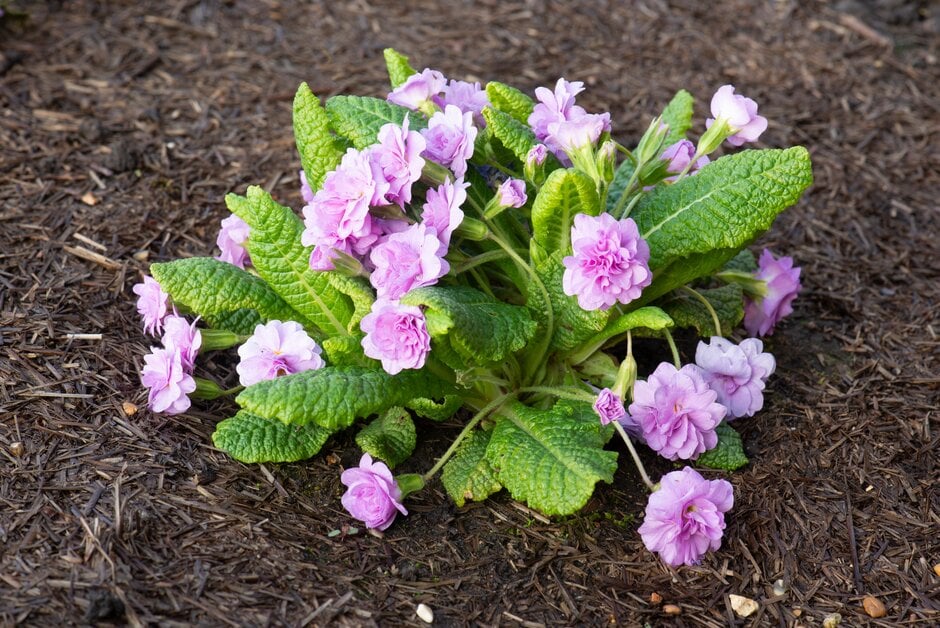Primula vulgaris 'Lilacina Plena' (Pr/Prim/d)
A compact, rosette-forming, evergreen perennial with dark green textured foliage. Large, fragrant double rose-violet to lilac-pink frilly flowers appear from early winter through until early spring when flowering increases
Size
Ultimate height
0.1–0.5 metresTime to ultimate height
2–5 yearsUltimate spread
0.1–0.5 metresGrowing conditions
Moisture
Moist but well–drainedpH
Acid, NeutralColour & scent
| Stem | Flower | Foliage | Fruit | |
| Spring | Purple Pink | |||
|---|---|---|---|---|
| Summer | ||||
| Autumn | ||||
| Winter | Purple Pink |
Position
- Full sun
- Partial shade
Aspect
East–facing or North–facing or South–facing or West–facing
Exposure
Exposed or Sheltered Hardiness
H5Botanical details
- Family
- Primulaceae
- Native to GB / Ireland
- No
- Foliage
- Evergreen
- Habit
- Clump forming
- Genus
Primula are herbaceous or semi-evergreen perennials, forming a basal rosette of simple leaves, with salver-shaped or bell-shaped flowers which may be solitary or carried in an umbel or in whorls on an erect stem
- Name status
Accepted
- Horticultural Group
- Primrose group primulas are mainly grown as herbaceous perennials, and produce clusters of flowers on individual stems from the basal rosettes, although a few may also have umbel-like flowers. They are either spring-flowering, if grown without protection, or winter- to spring-flowering, if grown as biennial container plants in greenhouses or indoors.
How to grow
Cultivation
Grow in full sun or partial shade in moderately fertile, moist but well-drained, humus-rich soil. See primula cultivation for further advice
Propagation
Propagate by division in autumn or after flowering
Suggested planting locations and garden types
- City and courtyard gardens
- Cottage and informal garden
- Patio and container plants
- Flower borders and beds
- Garden edging
- Underplanting of roses and shrubs
Pruning
No pruning required
Pests
May be susceptible to aphids, vine weevil, slugs, leaf and bud eelworms, leaf-mining flies and glasshouse red spider mite
Diseases
May be susceptible to primula leaf spot, primula brown core and grey moulds
Get involved
The Royal Horticultural Society is the UK’s leading gardening charity. We aim to enrich everyone’s life through plants, and make the UK a greener and more beautiful place.

